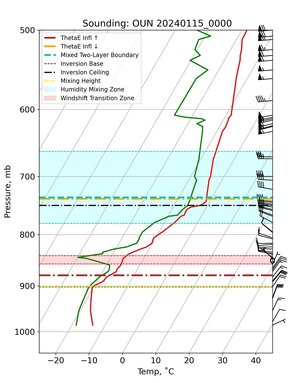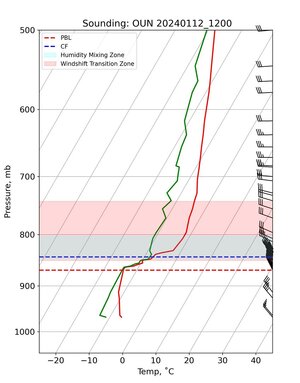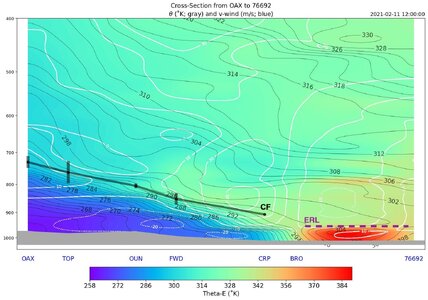gdlewen
EF4
Following is a fairly detailed question, but I think it's more of a question from a weather enthusiast who chases, and not relevant to the science of chasing, so I think it belongs here. Note: I can’t ask this of my colleagues in the Physics community, who will likely respond with the digital equivalent of a pat on the back and, “If you say so, Geoff.” Nor do I want to post this to reddit because the signal-to noise ratio there can be quite low. (I have more confidence in the denizens of StormTrack.)
Question: What unique analytical criteria do professional meteorologists use to identify cold anafrontal surfaces aloft?
Here’s an example, taken from the extreme cold event of February, 2021. Two soundings from February 11, 2021 at 12Z for OUN and FWD. For OUN, the method I’m using seems to have found a reasonable estimate of the frontal surface height (based on the winds profile), but for FWD, it looks to be too high.

What's the best method for doing this automatically? Thank's all!
Question: What unique analytical criteria do professional meteorologists use to identify cold anafrontal surfaces aloft?
- Unique is a keyword by which I mean "associated with a vertical transition from a polar air mass on the ground to a non-polar air mass aloft". Therefore, EML-type transitions are excluded (besides, EML look more katafrontal anyway, so...no.)
- Analytical is intended to differentiate from learned pattern recognition: a computed variable or composite index.
Here’s an example, taken from the extreme cold event of February, 2021. Two soundings from February 11, 2021 at 12Z for OUN and FWD. For OUN, the method I’m using seems to have found a reasonable estimate of the frontal surface height (based on the winds profile), but for FWD, it looks to be too high.

What's the best method for doing this automatically? Thank's all!



